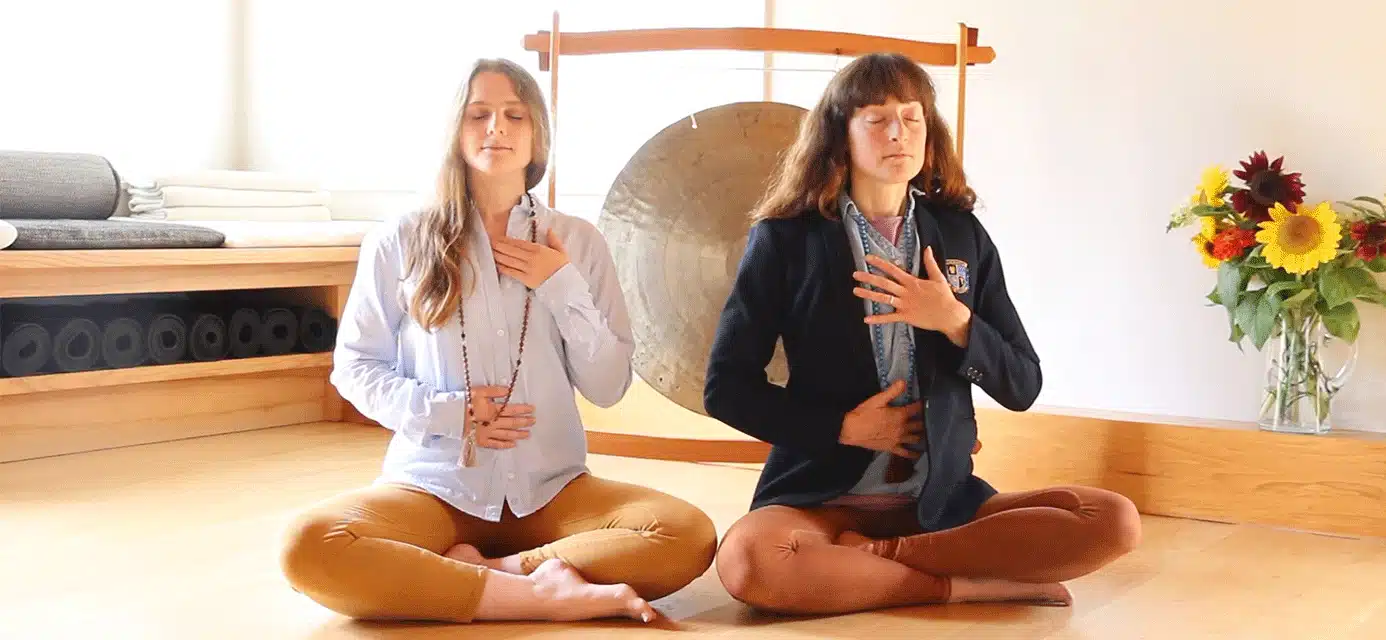Stress and emotion are physiological responses, generated from our perception, which cause chemical changes in our bodies. The internal, felt landscape of emotions, including our stress responses, are variations of normal human experience—even if they feel disruptive or if our nervous system becomes habituated toward a certain response. Sensation in the physical body may be processed by our mind, creating untrue thoughts.
What happens in your body when you feel stress or challenging emotions?
Yoga and meditation are effective ways to practice acknowledging the physical sensations that arise when we experience anger, happiness, grief, anticipation, and the many shades of experience in between. When we become the observers of our experience, we can grow into responsiveness and greater awareness of our body language and ability to speak kindly in tough moments.
Self-regulation takes practice, and it’s a worthwhile effort for each member of the family. Humans are co-regulating; our mirror neurons take the visual information about body language and assist us in adapting our behavior. The electromagnetic fields of our hearts communicate with one another and entrain in a shared rhythm. This means that we can assist each other in moving through a nervous system response that causes our bodies to freeze, flee, or fight. In other words, we make the unconscious conscious by acknowledging how our regulation affects ourselves and others.
The theme of this practice is “Soften and Sense.”
When we soften our bodies and notice our tension, we can almost immediately become listeners rather than thinkers or responders. The following practices can be done to redirect a difficult moment, or, better yet, shared. By spending less than five minutes a day, you can draw upon the wisdom gained from sustained practice.
Instructions for Family Yoga for Emotional Resilience and Stress Relief
1. Dissolving the Heart Wall
Stand or sit side by side. Place both hands over your heart, either in prayer mudra or one hand over the other. Inhale for a count of five and exhale for a count of five.
2. Acknowledge the State of Each Other’s Being (1-3 minutes)
Sit or stand back to back, touching and with a tall spine so you can make the most contact with your loved one. Let your hands rest anywhere they are comfortable, and let your eyes rest on a single point in order to attune to sensations.
Rather than adjusting and focusing on posture, soften and sense. Take in the sensation of your breath. Take in the sensation and pace of your loved one’s breath.
Often, by witnessing the breath of another, we are guided into connection. We can feel their movement and the capacity of their steadiness, and perhaps we can soften to each other.
3. Open to Each Other (3 minutes)
Stand facing each other and press your hands together. Bend the knees a bit and lift the arms together overhead. Walk the feet apart until you are steadily pressing hands and feeling a stretch in your armpits and chest. Take 10 breaths here to stretch the breathing muscles and guide the breath deeper into the belly.
4. Find Steadiness in Discomfort (1 minute)
In a seated position, hold the arms upward at 60 degrees. This practice deepens our capacity for discomfort and moves the breath deeper into the belly. It’s okay to laugh. This is hard!
5. Communicate Your Needs Plainly (1 minute)
Seated in wide-legged forward fold, guide each other into sensation by attuning to each other and communicating verbally (“Less,” “More”).
6. Integrate What You’ve Learned
Sit for a moment, side by side, hands at the heart. Notice.
Deepening our capacity for uncomfortable feelings is one of the greatest gifts we can give our loved ones. From our practice, and with humility, we may then encourage each other and offer true support as a listener rather than a judge, moving away from long-held patterns of stale, unhelpful communication.
Practice, Practice, Practice
With a physical practice and breath practice each day, even for just three to five minutes minutes, we can acknowledge the underlying beingness that is a steady and constant baseline.
May your family be well.
May your family be well.






